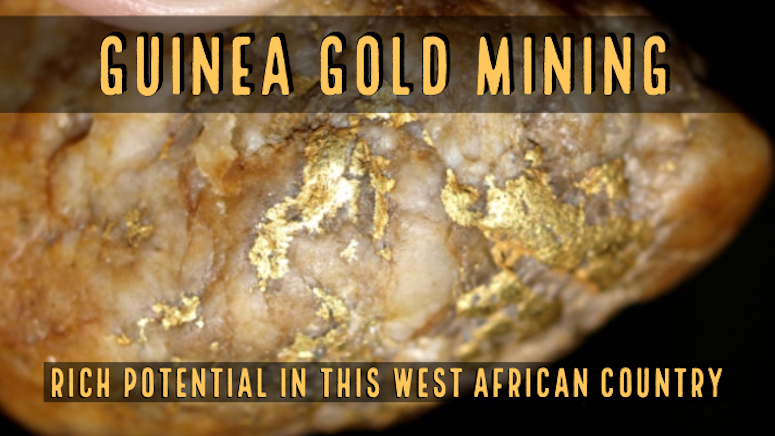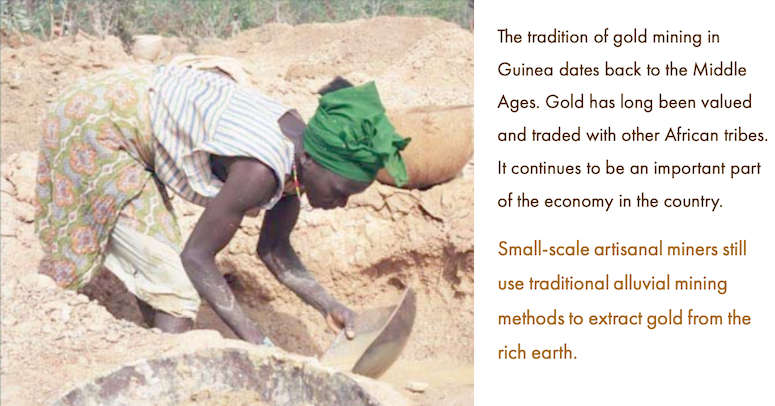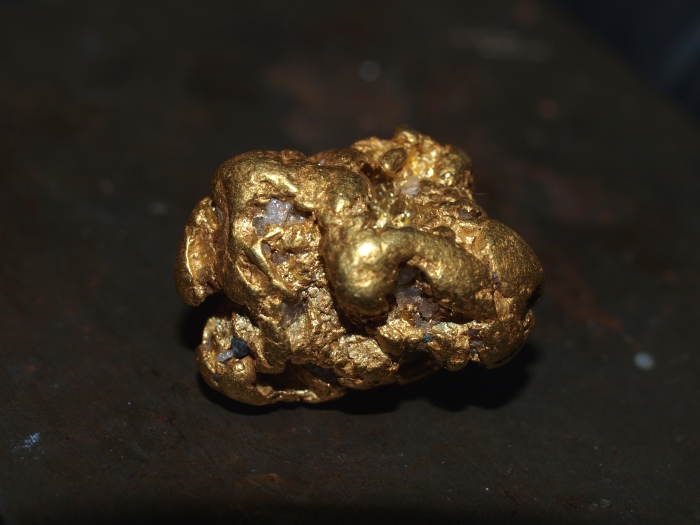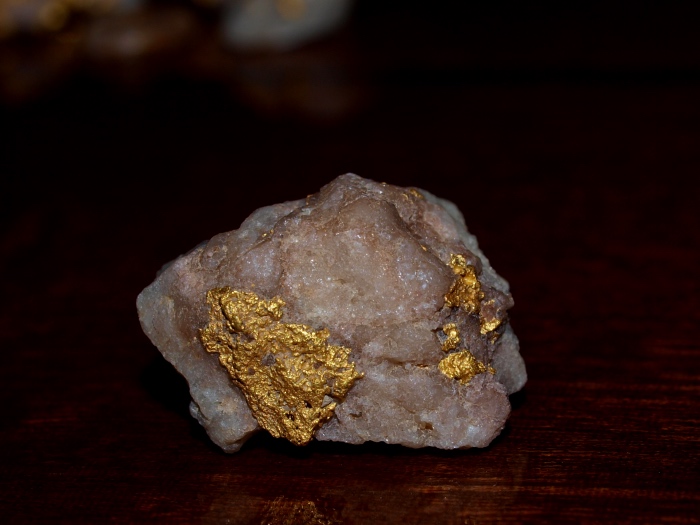
Tucked away to the west of the African continent is Guinea. Previously known as French Guinea, the coastal country primarily has an agriculture-based economy. However, mining forms a considerable part of the overall economy as well.
The country is rich in mineral reserves. It is currently the second largest producer of Bauxite and has vast reserves of iron ore, aluminum ore, gold as well as diamonds.
Previously unexplored and untapped, the natural resources beneath Guinea’s soil now contribute to 15% of the GDP. The country has a much higher potential. Its bauxite reserves alone are the largest in the world.
Compared to its neighboring countries, Guinea is much more abundant in natural resources. Gold mining is an important area which has seen a boom in the last few decades. Gold reserves primarily exist in the north-east of the country.
History of Gold Mining in Guinea
Despite its growing size and the recent increase in mining activity, gold mining is not new to the country. The history of gold mining can even be traced back to prehistoric times according to some experts.
In recorded history, when guinea was under European occupation, gold mining was taking place in 1903. In a few years, by 1908, twenty-one mining companies were actively mining for gold. For the period the gold production was around 0.33 tons which quite a number considering the lack of modern mining technology.
Eventually, over time the figure went up, with the Siguiri region alone produced 1.05 tons to 4.1 tons of gold on an annual basis by 1951.
Aside from the commercial scale mining of gold, the activity has always been a traditional employment for the local population. Many gold refining sites from the ancient times are still present that indicate just how old the profession is.

Artisanal Gold Mining
Currently, there has been in a boom in the mining sector within Guinea and gold is no exception. Only a few companies are licensed by the government to extract gold. However, there is growing activity of small-scale mining activity as well.
The thought of striking it rich is far too tempting for people not to try their luck. Artisanal mining involves groups of people setting up small mining towns temporarily near a site they believe holds gold reserves.
Gold is initially detected using metal detectors, and once found, the miners start digging shafts underground with the help of basic tools, such as shovels. No heavy machinery is used, which makes the job extraordinarily labor-intensive and hard. The risk of a shaft caving in is ever-present and makes the whole process extremely dangerous.
The final method of extraction used by artisanal gold miners is called amalgamation. This involves using mercury to separate out any gold found in the gravel. The mercury and gold together mix to create an amalgam, which is then burned off leaving behind just the gold. The entire process is extremely hazardous as mercury is a known neurotoxin.
Artisanal mining is fraught with dangers, but it is still quite common as people attempt to escape crippling poverty. There simply aren’t a lot of options for people in Guinea to work. For many, the allure of gold is too much to resist. Even though the work is hard and the gold recovery is often very little, it is estimated that hundreds of thousands take part in illegal mining activities across the country.
Read: 9 African Countries with the Richest Gold Mines

Commercial Mining
On the much larger industrial scale, gold mining is legal by getting government-issued permits. A few large companies are monopolizing the mining sector at the moment, and these include; the Guinea Gold Corporation (SAG), which is the subsidiary of the AngloGold Ashanti Company.
Other major players include Dinguiraye Mining Corporation (SMD) and Wega Mining. Between these main gold mining companies, the official gold extraction is an estimated eight to ten tons. But that is just a fraction of the total estimated amount of gold reserves, which many experts pin at around 700 tons.
Mining companies have government permits, and the Guinean government has a share in the profits as well. Most of the companies are foreign companies, so a lot of the profit actually goes out of Guinea.
Companies operating in the country utilize heavy machinery and the latest mining techniques. Local people are hired to work in the mines, and even though the process of mining is dangerous, it is much better regulated and nowhere near as dangerous as artisanal mining.
The Siguiri Gold Mine
Far and above all other mines is the Siguiri Gold Mine. This mining operation accounts for much of the countries current gold production.
The location of this open-pit mining operation has been a point of major contention since its inception. The Siguiri region has been a mining community for centuries, and many artisanal miners were displaced by the operations. Some villages were forcibly moved from their established location and payouts to affected parties were too low to satisfy those who were impacted. Villagers were moved to areas with limited water and no gold deposits. Conflict with locals and AngloGold Ashanti continues to this day.
In terms of gold production, the Siguiri Mine has high potential. The high estimated gold reserves still in the ground ensure that mining will likely continue for many more decades.
Also Read: Mining in Sudan – Some of the Richest Gold Reserves Remain Intact
Impact of Mining on Communities
Mining for gold and other natural resources have had both negative and positive effects on the country. Mining is a major sector, with the export of natural resources forming a considerable proportion of the country’s GDP. It has also led to a significant amount of foreign investment pouring into the country. This is a major boon for the country.
On the other hand, mining is fraught with dangers and large-scale mining has had certainly had some negative side effects. Communities which are in close proximity of large-scale mining operations have experienced contamination of water supply and a cloud of ever-present dust in the air which has made agriculture impossible. Mining has provided jobs, but from an environmental perspective, the damage is there.
Regardless of what you think of mining, for a poverty-stricken country like Guinea which happens to have some of the largest reserves of natural resources, mining for natural resources is good economically.
Next: Crush & Melt – How to Remove Gold from Rich Ores

